Okinawa
- Sort by
- Popularity
- Name
-
Aizu lacquerware Aizu nuri
- Lacquerware
- Fukushima
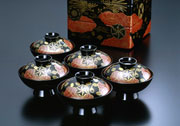
Aizu lacquerware (called Aizu nuri in Japanese) is lacquerware made in the Aizu region of Fukushima prefecture. During the manufacturing process, the craft is classified into round pieces, such as bowls, and flat pieces such as trays or stationery…
View more
-
Chichibu-meisen silk Chichibu meisen
- Woven textiles
- Saitama

Chichibu-meisen silk is a textile produced in the city of Chichibu, Saitama prefecture. It is a plain-woven textile with both sides dyed equally because the threads will be stencil dyed. Since the textile is double-sided, it can be washed and rema…
View more
-
Obori-soma ware Obori soma yaki
- Ceramic
- Fukushima

Obori-soma ware (called Obori-soma yaki in Japanese) is a form of porcelain produced around the town of Namie in Fukushima prefecture. This craft uses blue porcelain enamel which is made from locally collected grindstone. The distinctive feature …
View more
-
Tsuboya ware Tsuboya yaki
- Ceramic
- Okinawa
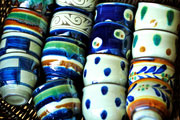
Tsuboya ware (called Tsuboya yaki in Japanese) is a form of pottery produced mainly in Tsuboya, city of Naha, Okinawa prefecture. This craft is one of the leading representations of Okinawan pottery (yachimun in the Okinawa dialect). The notable f…
View more
-
Aizu-hongo ware Aizu hongo yaki
- Ceramic
- Fukushima
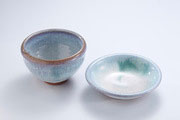
Aizu-hongo ware (called Aizu-hongo yaki in Japanese) is a traditional handicraft from the region of Aizu in Fukushima prefecture with a history of about four hundred years. This pottery, which is thought to have originated during the Sengoku perio…
View more
-
Boshu uchiwa fans Boshu uchiwa
- Other crafts
- Chiba
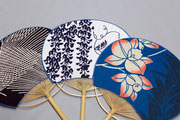
Boshu uchiwa is a type of fan made in the areas around the cities of Tateyama and Minamiboso in Chiba prefecture. This is one of Japan’s big three uchiwa types, with the other two being Marugame (Kagawa prefecture) and Kyo uchiwa (Kyoto prefecture…
View more
-
Iwatsuki doll Iwatsuki ningyo
- Dolls, kokeshi
- Saitama

Iwatsuki doll (called Iwatsuki ningyo in Japanese) is a type of doll made in Iwatsuki ward, Saitama prefecture. This doll is known for its round face with big eyes, smooth and beautiful skin, and shiny human-like hair. The white skin comes from a …
View more
-
Miyako ramie textile Miyako jofu
- Woven textiles
- Okinawa
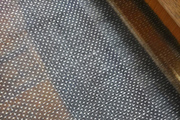
Miyako jofu is a textile produced on the island of Miyakojima, Okinawa prefecture. It is woven from a fabric called ramie and dyed with Ryukyu indigo, a type of indigo native to Okinawa. This textile has a fine kasuri pattern* and a smooth and lu…
View more
-
Ryukyu lacquerware Ryukyu shikki
- Lacquerware
- Okinawa
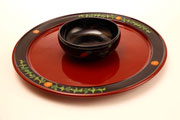
Ryukyu lacquerware (called Ryukyu shikki in Japanese) is produced in Okinawa prefecture. Lacquerware techniques imported from China were well-adapted during the development of Ryukyu lacquerware unique to Okinawa. The technology and artistry invol…
View more
-
Kumejima tsumugi silk Kumejima tsumugi
- Woven textiles
- Okinawa
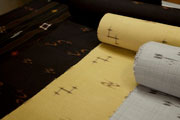
Kumejima tsumugi silk is a textile produced on the island of Kumejima, Okinawa prefecture. The history of this craft goes back all the way to the Muromachi period (1336-1573). This textile is distinct because of its elegant texture and deep color …
View more
-
Tendo Japanese chess pieces Tendo shogi koma
- Other crafts
- Yamagata
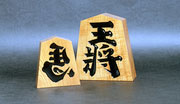
Tendo Japanese chess pieces (called Tendo shogi koma in Japanese) are made in the cities of Tendo, Yamagata, and Murayama in Yamagata prefecture. Production is thought to have begun in Tendo back during the Edo period (1603-1868) and now the city …
View more
-
Yamagata cast iron Yamagata imono
- Metal works
- Yamagata
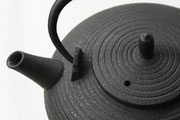
Yamagata cast iron (called Yamagata imono in Japanese) is produced in the city of Yamagata, Yamagata prefecture. At first, metal fittings, Buddhist statues, and daily use items were made. Then, as skills and techniques were developed, iron kettles…
View more
-
Ryukyu traditional resist-dyed textiles Ryukyu kasuri
- Woven textiles
- Okinawa
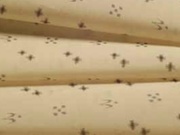
Ryukyu kasuri is a textile made in Okinawa prefecture. It is made mostly from silk and dyed with both plant and synthetic dyes using a kasuri* or resist-dyeing technique. This craft features over six hundred different kinds of patterns inspired by…
View more
-
Sakai cutlery Sakai uchihamono
- Metal works
- Osaka
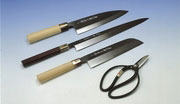
Sakai traditional blades are hammer-forged knives produced in the cities of Osaka and Sakai, Osaka prefecture. To achieve both strength and cutting quality, this craft is made by combining soft iron and steel. This craft is forged to have a sharp…
View more
-
Chibana-hanaori textiles Chibana hanaori
- Woven textiles
- Okinawa
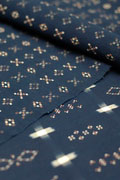
Chibana hanaori is a textile produced in Chibana, Okinawa, Okinawa prefecture. It has flowery patterns woven in the base textile as well as a continuous geometric pattern. This kind of textile with a continuous geometric pattern is called mon orim…
View more
-
Oitama tsumugi silk Oitama tsumugi
- Woven textiles
- Yamagata
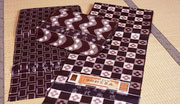
Oitama tsumugi is a silk fabric produced in the Yonezawa, Hakutaka and Nagai regions of Oitama in southern Yamagata prefecture. The area was well-known for producing and exporting ramie, a tall plant of the nettle family that has been used to make…
View more
-
Osaka naniwa pewterware Osaka naniwa suzuki
- Metal works
- Osaka
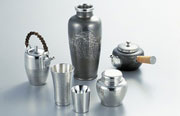
Osaka naniwa pewterware (called Osaka naniwa suzuki in Japanese) is a metalwork produced in and around the city of Osaka, Osaka prefecture. In the past, tin mined in Japan was used, but today it is imported mainly from Thailand and Indonesia. This…
View more
-
Yaeyama cotton cloth Yaeyama minsa
- Woven textiles
- Okinawa
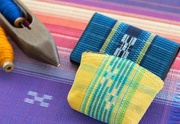
Yaeyama minsa is a fabric produced in the town of Taketomi, Yaeyama district and the city of Ishigaki, Okinawa prefecture. The origin of this craft is not clear but it is thought that the kasuri belt was brought to Okinawa from Afghanistan via Chi…
View more
-
Yaeyama ramie cloth Yaeyama jofu
- Woven textiles
- Okinawa
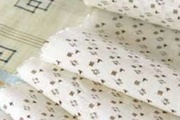
Yaeyama jofu is a fabric produced in the area surrounding Yaeyama ward in Ishigaki city, Okinawa prefecture. This textile is woven with hand-spun ramie threads and used to be produced as a tax to the Ryukyu Kingdom (present day Okinawa) in ancient…
View more
-
Osaka Buddhist altar Osaka butsudan
- Household Buddhist altars
- Osaka
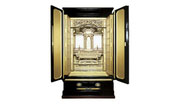
Osaka Buddhist altars (called Osaka butsudan in Japanese) are produced in the cities of Osaka, Yao, Higashiosaka, Sakai, and Kishiwada in Osaka prefecture. Along with the standard lacquer-painted, gold-leafed altars, this region is also known for …
View more
-
Shuri brocade Shuri ori
- Woven textiles
- Okinawa
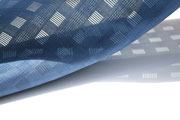
Shuri brocade (called Shuri ori in Japanese) is a woven fabric produced on the main island of Okinawa. There are two types of fabric, kasuri orimono and mon orimono, and these include hanaui, hanakura ori, doton ori, kasuri and minsa. The Ryukyu …
View more
-
Yomitanzan-hanaori textiles Yomitanzan hanaori
- Woven textiles
- Okinawa
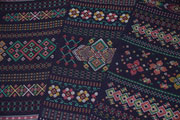
Yomitanzan hanaori is a textile produced in the village of Yomitan, Okinawa. The threads of this craft are first dyed before being woven in a geometric, flowerlike design. This craft is woven with silk or cotton threads dyed with plant-based dyes …
View more
-
Miyakonojo archery bows Miyakonojo daikyu
- Wood, bamboo crafts
- Miyazaki
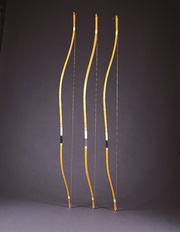
Miyakonojo Bows (called Miyakonojo Daikyu in Japanese) are bamboo archery bows produced in Miyakonojo, Miyazaki prefecture. The Miyakonojo area is known for growing high quality bamboo and has produced a variety of weapons like wooden swords as w…
View more
-
Osaka carved wooden panel Osaka ranma
- Wood, bamboo crafts
- Osaka

Osaka Transoms (called Osaka Ranma in Japanese) are transoms produced in and around the cities of Osaka, Kishiwada, and Suita in Osaka prefecture. In a Japanese-style house, transoms are wooden panels attached between the ceilings and lintels of t…
View more
-
Edo-kimekomi doll Edo kimekomi ningyo
- Dolls, kokeshi
- Saitama
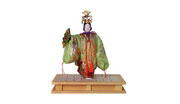
Edo Kimekomi Dolls (called Edo Kimekomi ningyo in Japanese) are mainly produced in Taito, Sumida, and Arakawa wards which are located in northeastern Tokyo. The doll’s body, arms, and legs are made of toso, a modeling material made of paulownia sa…
View more
-
Okuaizu Basketry Oku aizu amikumi zaiku
- Wood, bamboo crafts
- Fukushima
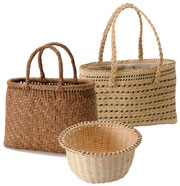
Okuaizu Basketry, called Okuaizu Amikumi Zaiku in Japanese, is basketry produced around Mishima Town, Onuma County, Fukushima Prefecture. As this mountainous area in the Okuaizu region has much snow and farmers are unable to work in the fields in …
View more
-
Ryukyu traditional textiles Ryukyu bingata
- Dyed textiles
- Okinawa
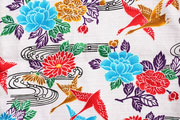
Ryukyu Bingata is a dyed and woven textile produced around Shuri, Okinawa prefecture. Its origin goes back to the 14th to 15th century. The ladies of the royal family or the families of the warrior class wore Ryukyu Bingata. There are two kinds of…
View more
-
Uetsu tilia bark cloth Uetsu shinafu
- Woven textiles
- Yamagata

Uetsu Shinafu is a textile produced in the area of Sekikawa, Tsuruoka, Yamagata prefecture, and Sanpoku, Murakami, Niigata prefecture. The names of the neighboring prefectures of Yamagata (Uzen) and Niigata (Echigo) are combined and called Uetsu, …
View more
-
Kasukabe traditional paulownia chest Kasukabe kiri tansu
- Wood, bamboo crafts
- Saitama
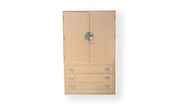
Kasukabe traditional paulownia chests, called Kasukabe Kiri-tansu in Japanese, are traditional woodwork made around Saitama City and Kasukabe City, Saitama Prefecture. Kasukabe Kiri-tansu are distinguished by their simple design based on the strai…
View more
-
Osaka karaki wood joinery Osaka karaki sashimono
- Wood, bamboo crafts
- Osaka
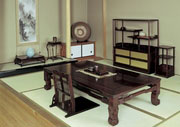
Osaka Karaki Wood Joinery, called Osaka Karaki Sashimono in Japanese, are wooden articles manufactured in several cities of Osaka Prefecture. Karaki is wood from trees mainly grown in Southeast Asia, and include rosewood, ebony, Chinese quince, an…
View more

































































































































































































































































































